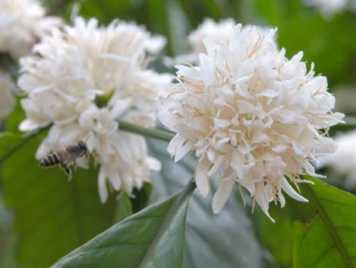Landscape transition in South India: impacts on pollination service and agricultural production at the landscape scale
Project at a glance

Complex agro-ecological landscapes, where forest patches are dispersed within an agroforest matrix more or less intensively managed, have been recognized for providing a range of goods and ecosystem services at different levels. In the region of Kodagu in South India, coffee is traditionally grown under shade with a diversity of trees, between forest fragments and paddy rice, creating a heterogeneous picture of the tree cover at the landscape level. It has been shown that pollination by bees increases significantly fruit set of coffee Coffea canephora compared to wind pollination. In this region, landscape transitions are defined by the conversion from forest to agroforests, the opening and simplification of canopy structure in coffee plantations. At the scale of the plantation, substantial gain in production efficiency are driving those land use changes and management choices, but negative environmental impacts can unfold at larger scales, and in turn, affect the productivity at farm level, for example through the pollination service, with complex feedback loops.
This project seeks to assess the impact of landscape transition on the provision of a biodiversity-based ecosystem service – pollination – and the subsequent provision of agricultural production service at different scales. The information derived from those models would be useful to improve long term viability of agroforest systems, ecosystem service management and sustainable livelihoods.
Objectives of the project
- Assess the determinants of the spatial distribution of pollinators at different scales, taking into account land-use pattern, local nesting resources, floral resources and other abiotic factors.
- Evaluate the foraging behavior of pollinator species and investigate the relationship between the visiting rate in coffee flowers, the foraging distance from the nesting sites and the quality of the matrix.
- Model the interactive effects between patches and other components of the agro-ecological matrix on pollination service, testing different model structure.
- Assess the trade-off between crop pollination service provided by managed bee communities and wild bee communities.
- Build scenarios of land-use change and landscape transition and simulate their impacts on pollination service.
Expected results
- Better understanding of the impacts of different scenario of land-use changes for pollination services, with some implication for conservation, agricultural production and local livelihoods
- Potentials of alternative strategies to maintain pollination services and implications for co-production of ecosystem services, including risks and costs
Partners
- Centre de coopération internationale en recherche agronomique pour le développement (CIRAD)
- French Institute of Pondicherry (IFP)
- University of Agricultural Sciences, Bangalore (UAS)
Funders
- European Union’s Seventh Framework Programme for research, technological development and demonstration (EU FP7 - IDP BRIDGES Progam)
- Centre de coopération internationale en recherche agronomique pour le développement (CIRAD)
Duration of the project
November 2013-October 2016
Contact
No database information available
Links
- INTERFACE: Blog of the IDP BRIDGES Fellowships on plant science and ecology
